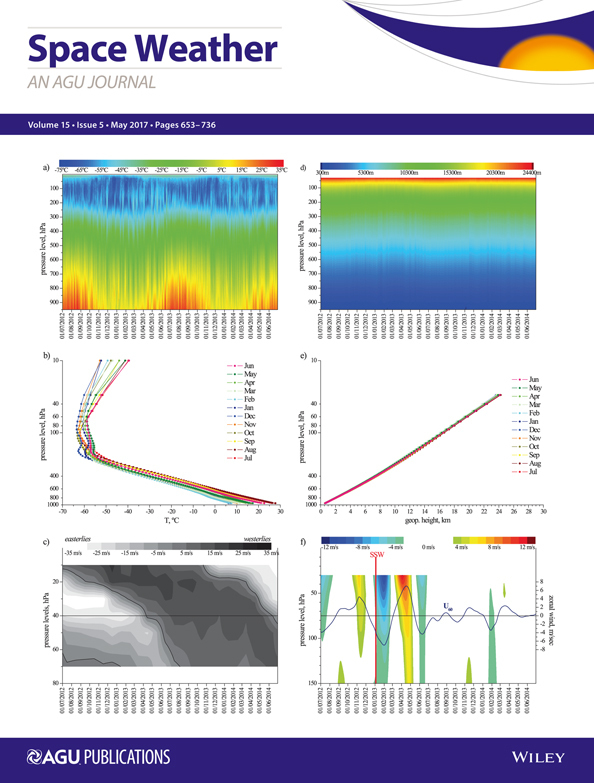Performance evaluation of GIM‐TEC assimilation of the IRI‐Plas model at two equatorial stations in the American sector
Abstract
Empirical models of the ionosphere, such as the International Reference Ionosphere (IRI) model, play a vital role in evaluating the environmental effect on the operation of space‐based communication and navigation technologies. The IRI extended to Plasmasphere (IRI‐Plas) model can be adjusted with external data to update its electron density profile while still maintaining the overall integrity of the model representations. In this paper, the performance of the total electron content (TEC) assimilation option of the IRI‐Plas at two equatorial stations, Jicamarca, Peru (geographic: 12°S, 77°W, dip angle 0.8°) and Cachoeira Paulista, Brazil (Geographic: 22.7°S, 45°W, dip angle −26°), is examined during quiet and disturbed conditions. TEC, F2 layer critical frequency (foF2), and peak height (hmF2) predicted when the model is operated without external input were used as a baseline in our model evaluation. Results indicate that TEC predicted by the assimilation option generally produced smaller estimation errors compared to the “no extra input” option during quiet and disturbed conditions. Generally, the error is smaller at the equatorial trough than near the crest for both quiet and disturbed days. With assimilation option, there is a substantial improvement of storm time estimations when compared with quiet time predictions. The improvement is, however, independent on storm's severity. Furthermore, the modeled foF2 and hmF2 are generally poor with TEC assimilation, particularly the hmF2 prediction, at the two locations during both quiet and disturbed conditions. Consequently, IRI‐Plas model assimilated with TEC value only may not be sufficient where more realistic instantaneous values of peak parameters are required.
Number of times cited: 1
- Umut Sezen, Tamara L. Gulyaeva and Feza Arikan, Performance of Solar Proxy Options of IRI‐Plas Model for Equinox Seasons, Journal of Geophysical Research: Space Physics, 123, 2, (1441-1456), (2018).





